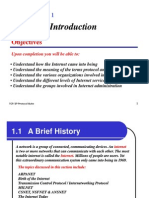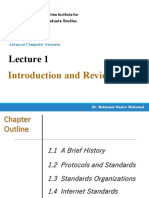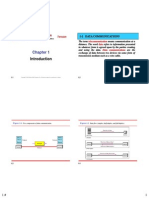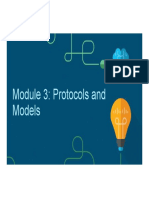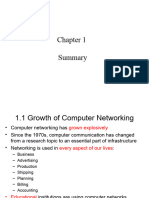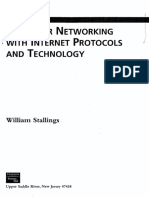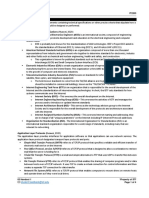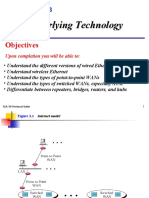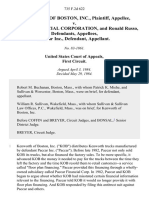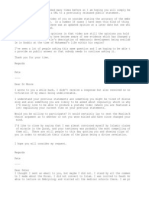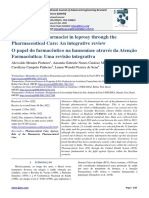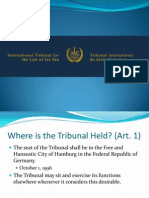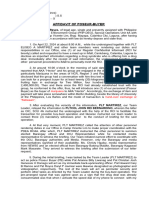0% found this document useful (0 votes)
214 views13 pagesTCP/IP Protocol Essentials
The document introduces the history and development of the Internet. It discusses how the Internet originated from ARPANET and various networks that later joined. It also summarizes the roles of protocols, standards, standards organizations, and groups involved in Internet administration such as IAB, IETF, ICANN that have guided the growth and standardization of the Internet. The document aims to help readers understand the key concepts, terms, and organizations related to how the Internet works and is governed.
Uploaded by
Rahul RajCopyright
© Attribution Non-Commercial (BY-NC)
We take content rights seriously. If you suspect this is your content, claim it here.
Available Formats
Download as PPT, PDF, TXT or read online on Scribd
0% found this document useful (0 votes)
214 views13 pagesTCP/IP Protocol Essentials
The document introduces the history and development of the Internet. It discusses how the Internet originated from ARPANET and various networks that later joined. It also summarizes the roles of protocols, standards, standards organizations, and groups involved in Internet administration such as IAB, IETF, ICANN that have guided the growth and standardization of the Internet. The document aims to help readers understand the key concepts, terms, and organizations related to how the Internet works and is governed.
Uploaded by
Rahul RajCopyright
© Attribution Non-Commercial (BY-NC)
We take content rights seriously. If you suspect this is your content, claim it here.
Available Formats
Download as PPT, PDF, TXT or read online on Scribd
/ 13




